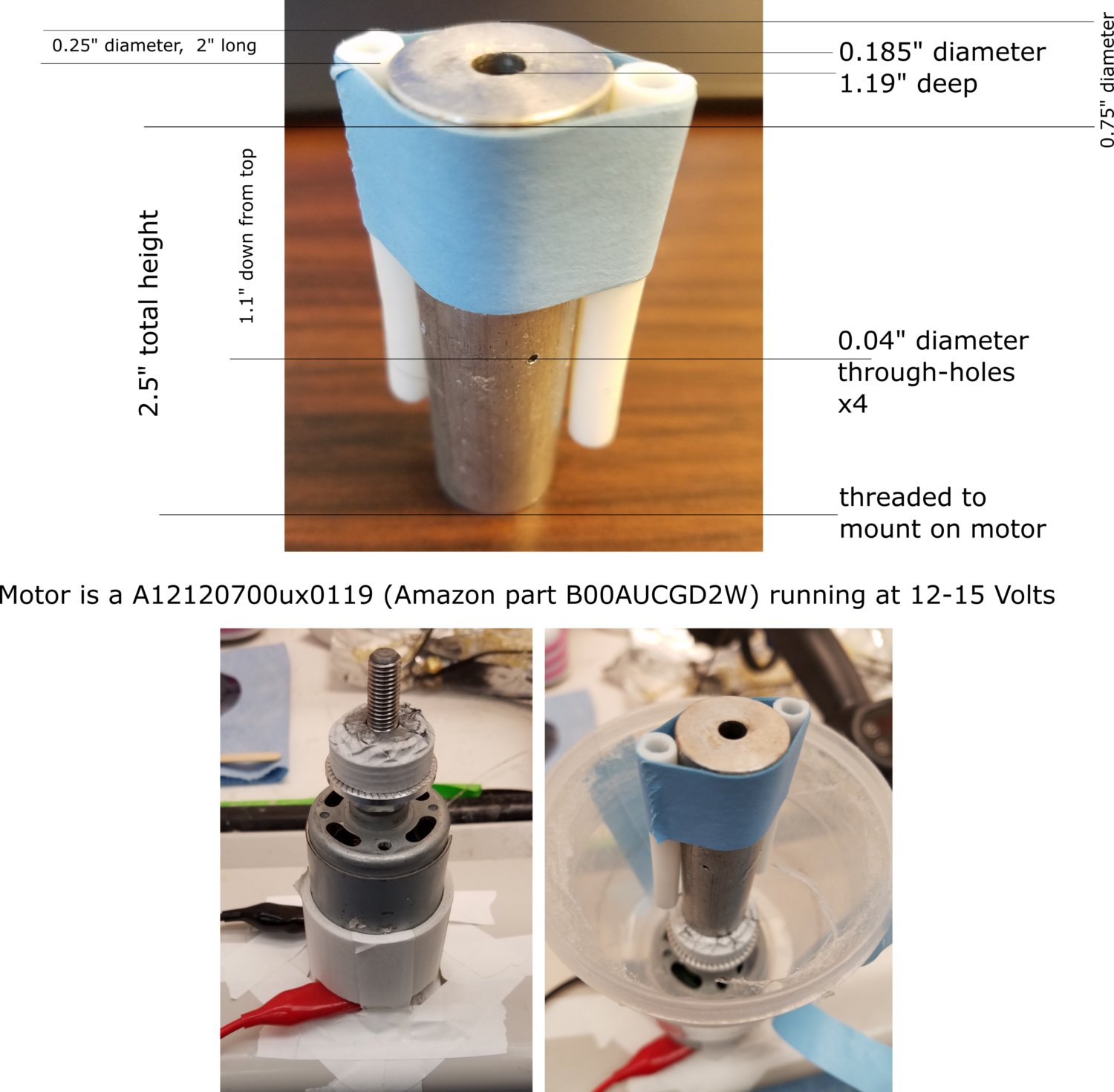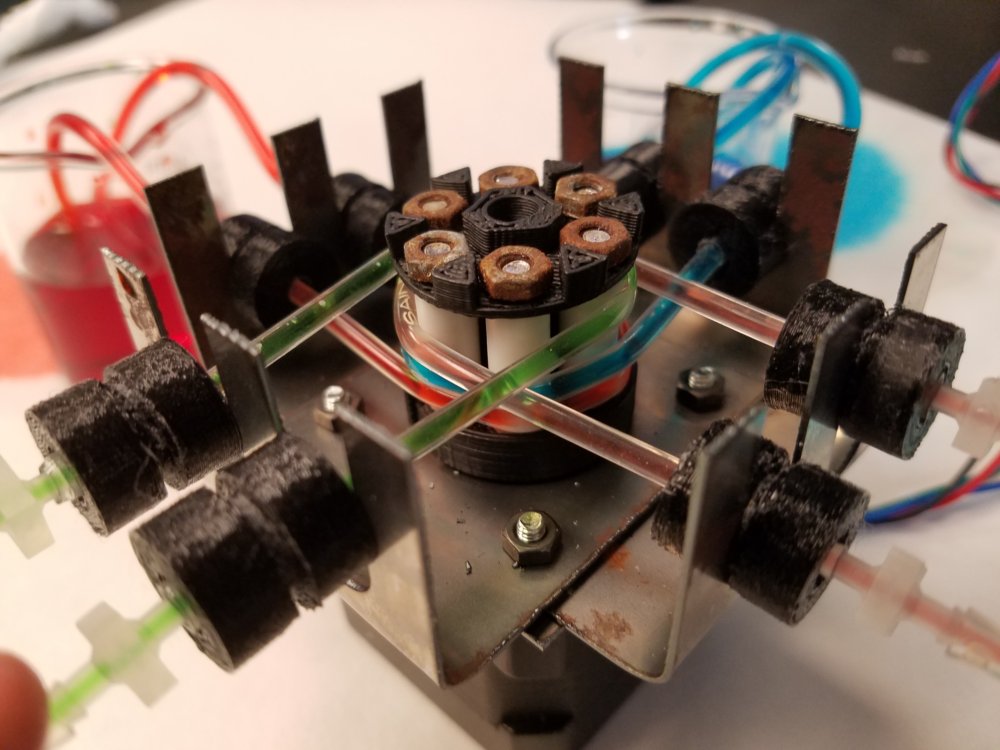Resources
Need to know if your incubator alarms are going off? Using a NodeMCU (~$9) board wired to incubator (and gas guard) relays, you can have SMS text messages sent to your phone when the alarm trips. That way you will know, any time 24/7, what is going on with your cell culture. Instructions can be found here and Arduino code can be found here. The NodeMCU can run Arduino code and has built-in WiFi! Not bad for under ten dollars…
Our recently published manuscript in Advanced Healthcare Materials utilizes a custom-built fiber spinning system to produce pNIPAM microfibers. To replicate this system, please see the figure below for the specifications for the extractor head and DC motor.
Our DIY peristaltic pump procedure is published in Lab-on-a-Chip’s “Chips & Tips” blog. Using easily obtainable Arduino components and stepper motors, and some simple parts formed with a 3D printer and laser cutter, we produce low-cost, computer controlled, individually addressable peristaltic pumps. We use these to perfuse artificial vasculature, but they likely have many additional applications. Feel free to comment on the blog!
DIY Peristaltic Pump Files

|
Above video Copyright 2011 National Geographic Television
|
A video illustrating the steps involved in forming 3D microfluidic networks in PDMS using sacrificial sugar structures is shown to the left. |
The steps involved are
- Attach larger (~mm diameter) sticks of sugar to melt-spun sugar fibers (cotton candy).
- Place the entire sugar structure in a mold.
- Pour embedding material (PDMS) over sacrificial structure. It may take time for the embedding material to fully wet the structure.
- When embedding material has solidified, remove from mold and slice edges to expose sugar.
- Place in water bath to remove the sugar, leaving behind a complex 3D fluidic structure.